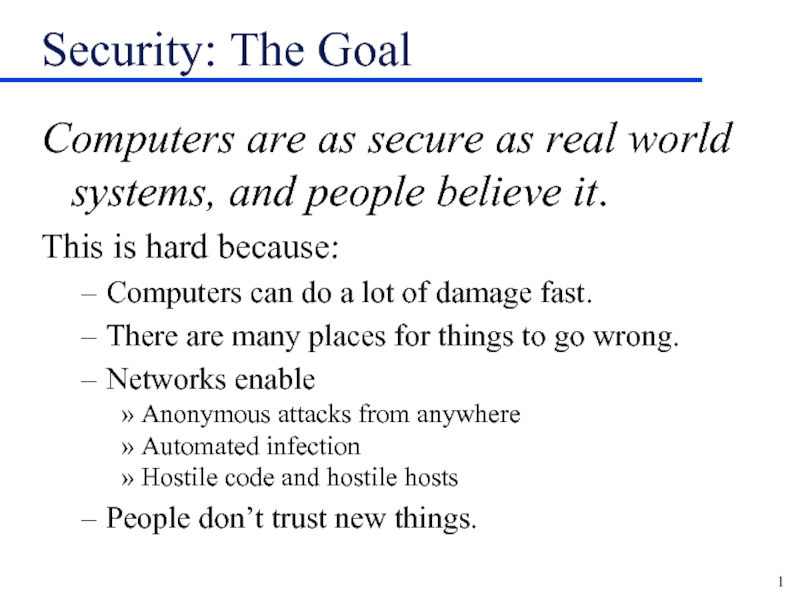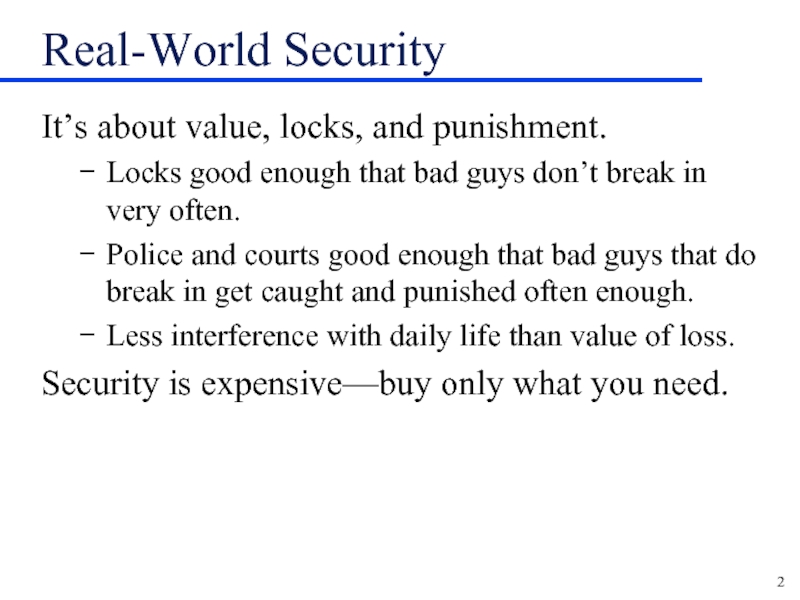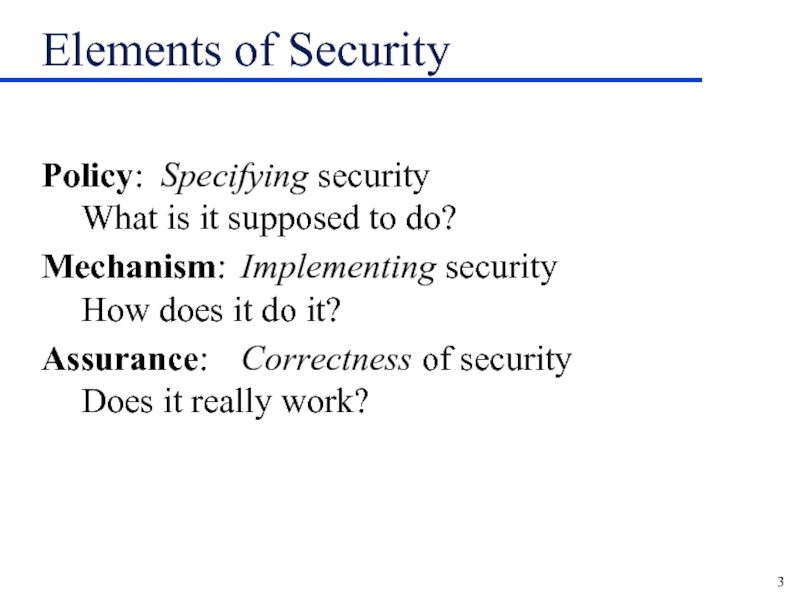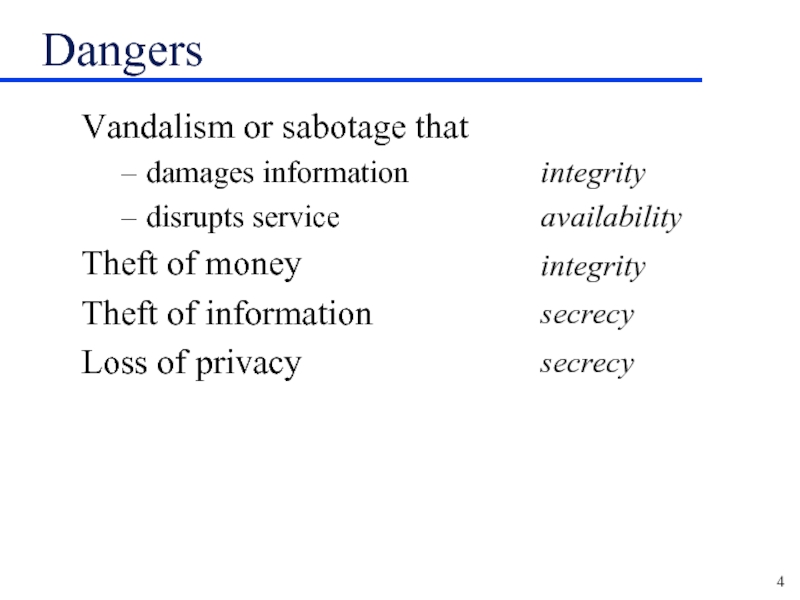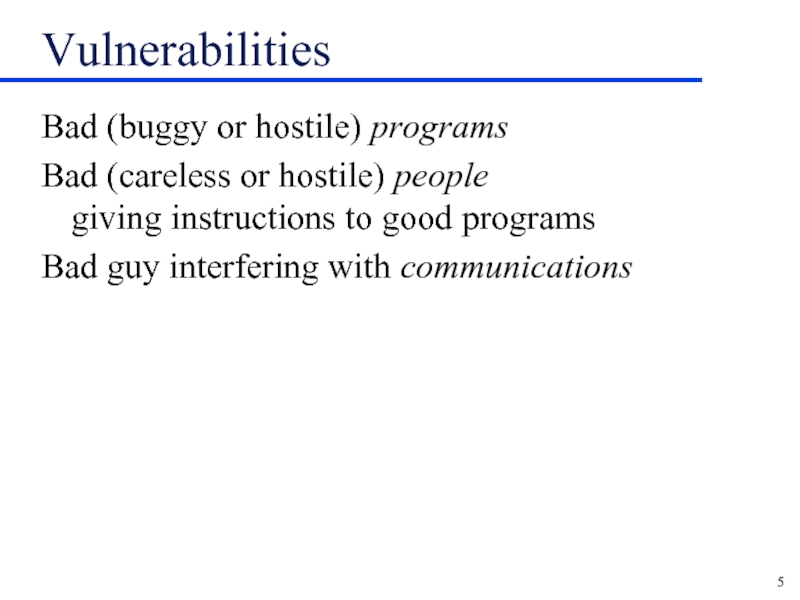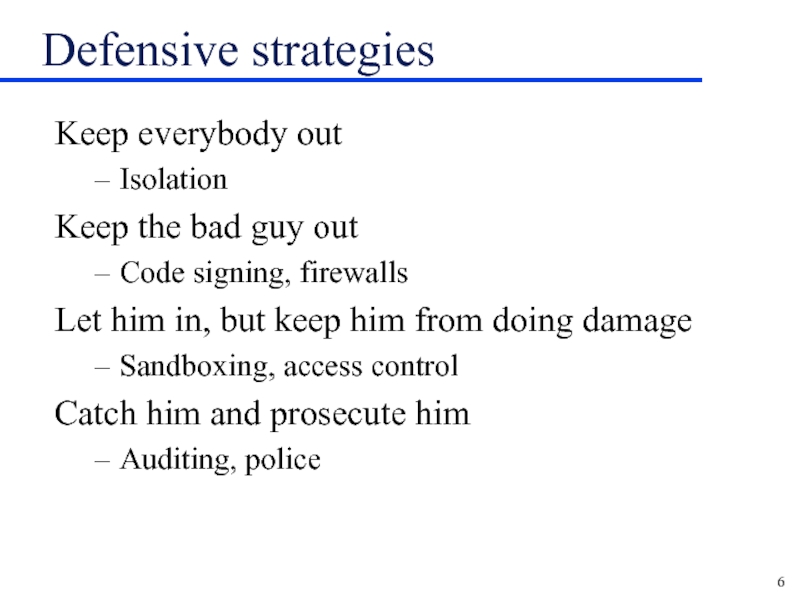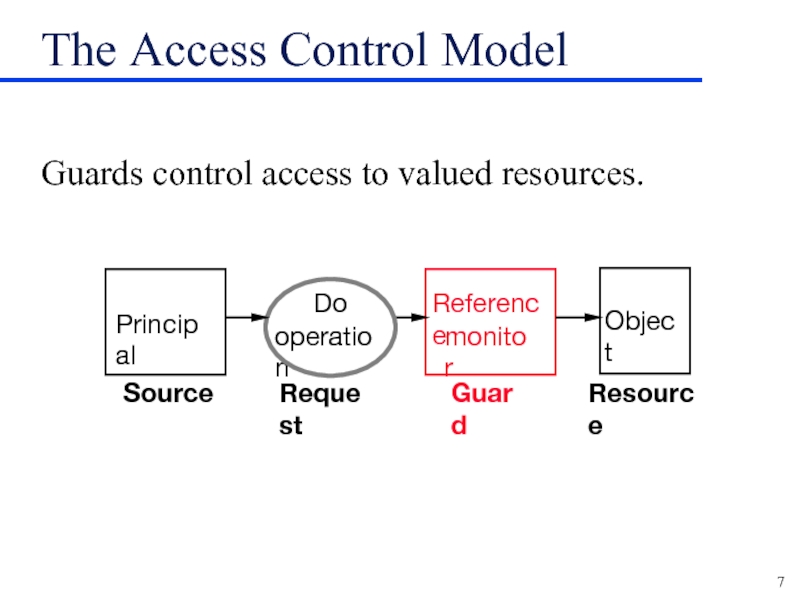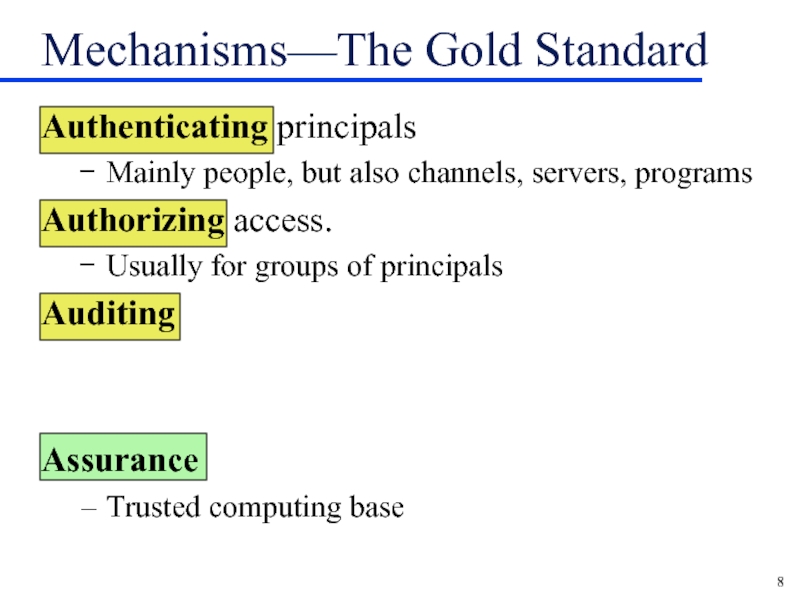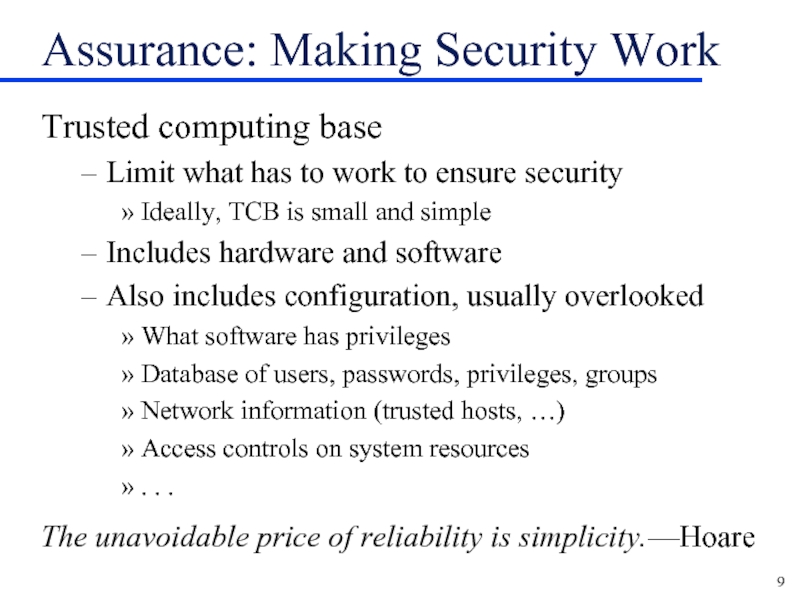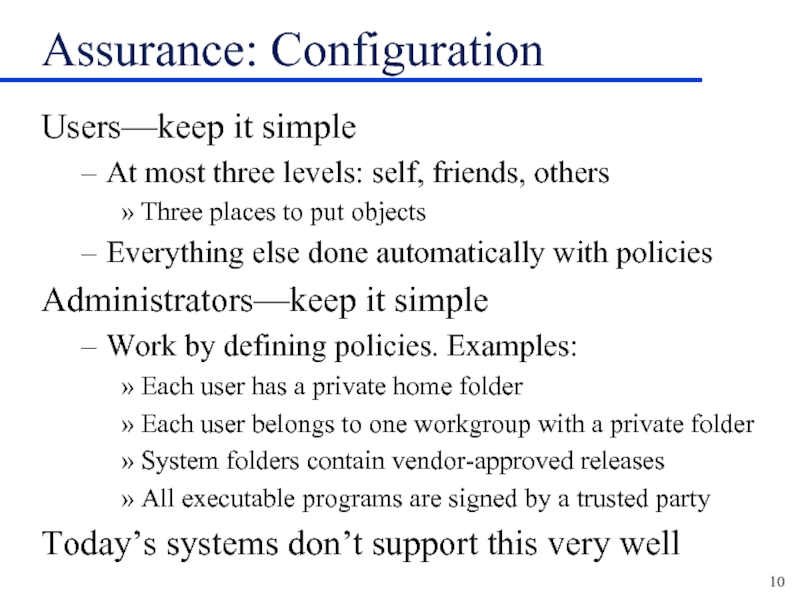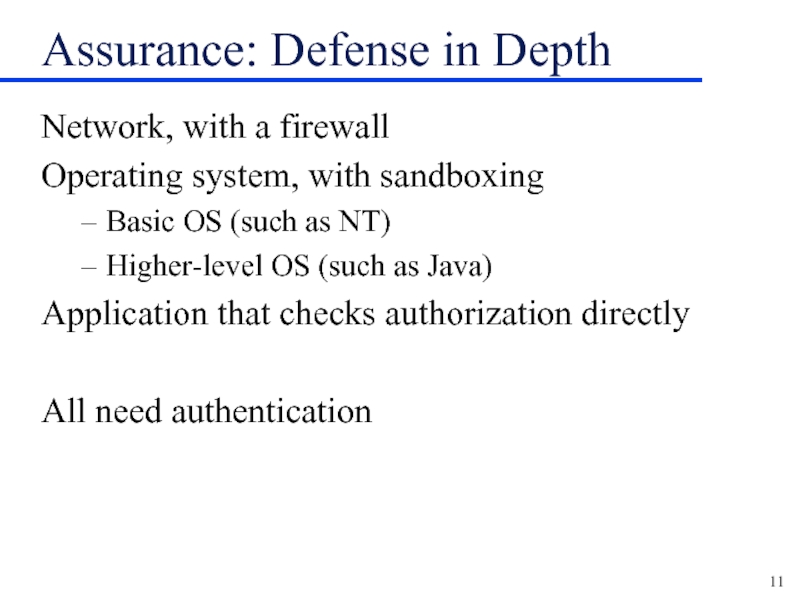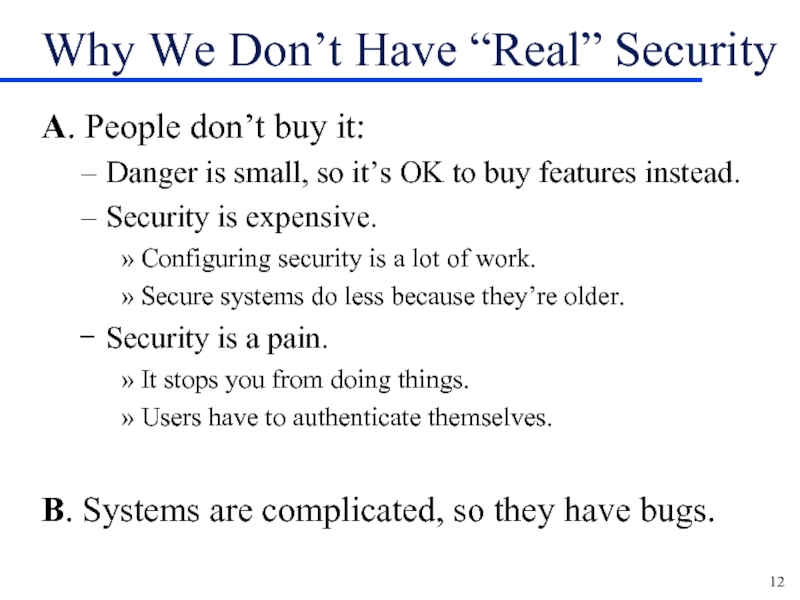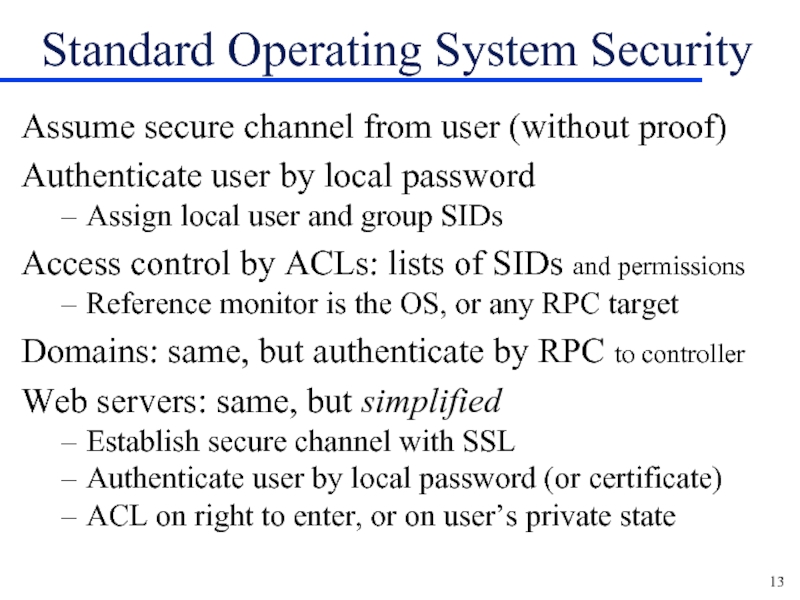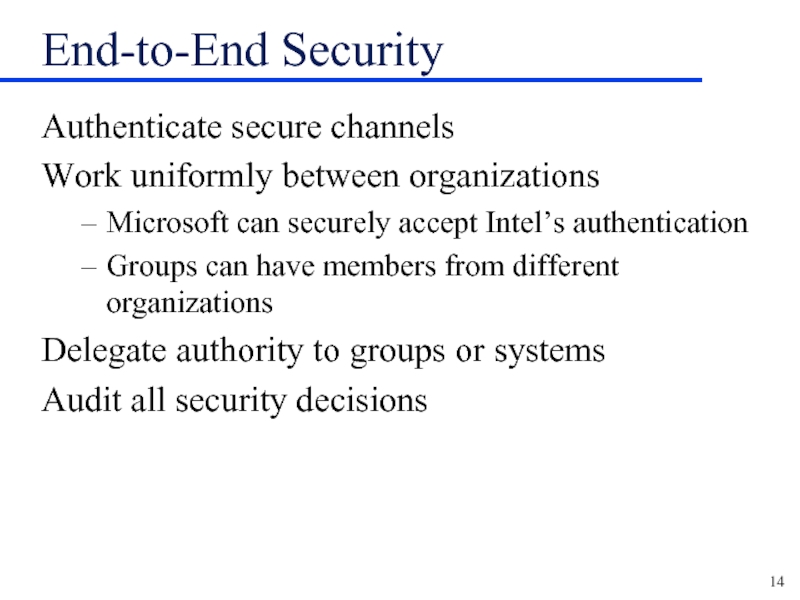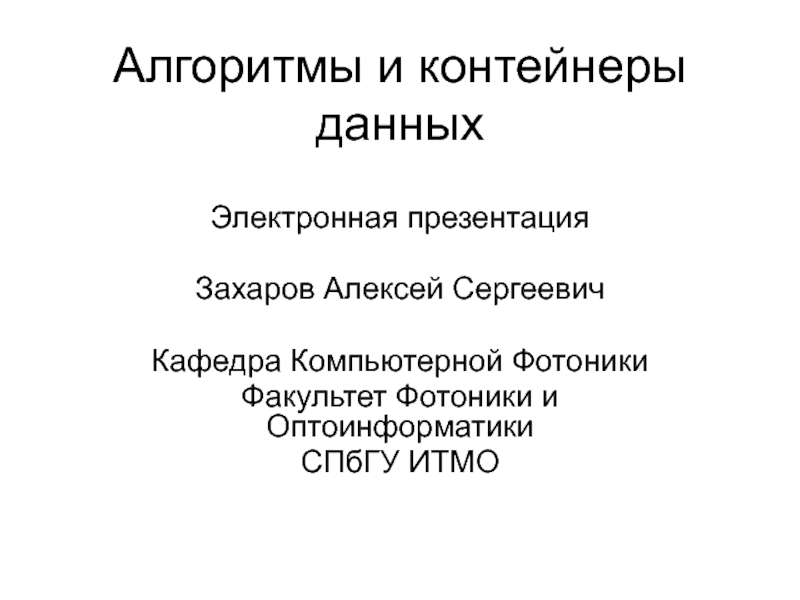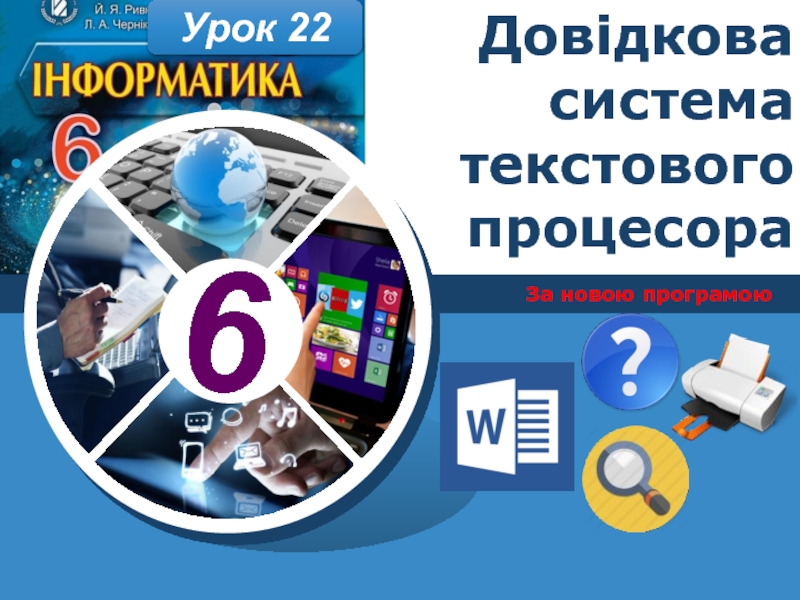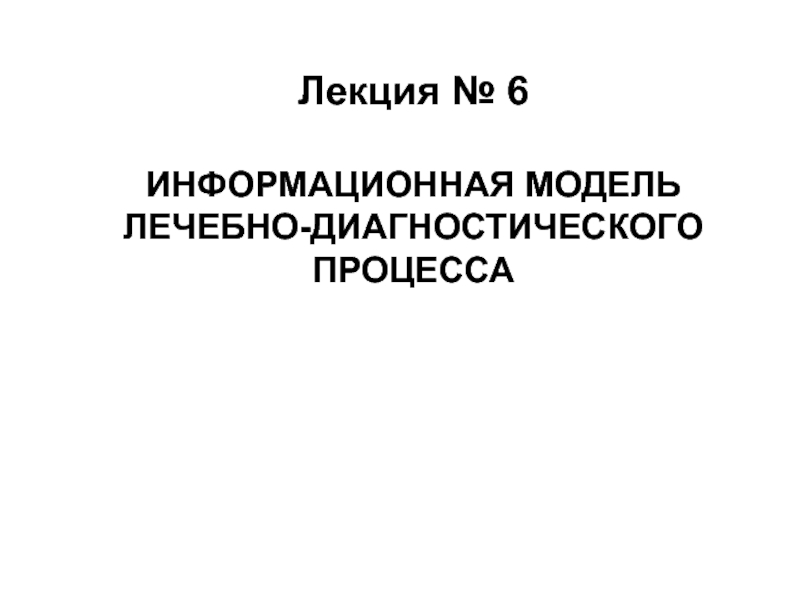and people believe it.
This is hard because:
Computers can do a lot of damage fast.
There are many places for things to go wrong.
Networks enable
Anonymous attacks from anywhere
Automated infection
Hostile code and hostile hosts
People don’t trust new things.
- Главная
- Разное
- Дизайн
- Бизнес и предпринимательство
- Аналитика
- Образование
- Развлечения
- Красота и здоровье
- Финансы
- Государство
- Путешествия
- Спорт
- Недвижимость
- Армия
- Графика
- Культурология
- Еда и кулинария
- Лингвистика
- Английский язык
- Астрономия
- Алгебра
- Биология
- География
- Детские презентации
- Информатика
- История
- Литература
- Маркетинг
- Математика
- Медицина
- Менеджмент
- Музыка
- МХК
- Немецкий язык
- ОБЖ
- Обществознание
- Окружающий мир
- Педагогика
- Русский язык
- Технология
- Физика
- Философия
- Химия
- Шаблоны, картинки для презентаций
- Экология
- Экономика
- Юриспруденция
Security. The goal презентация
Содержание
- 1. Security. The goal
- 2. Real-World Security It’s about value, locks, and
- 3. Elements of Security Policy: Specifying security What
- 4. Dangers Vandalism or sabotage that damages
- 5. Vulnerabilities Bad (buggy or hostile) programs Bad
- 6. Defensive strategies Keep everybody out Isolation
- 7. The Access Control Model Guards control access
- 8. Mechanisms—The Gold Standard
- 9. Assurance: Making Security Work Trusted computing base
- 10. Assurance: Configuration Users—keep it simple At most
- 11. Assurance: Defense in Depth Network, with a
- 12. Why We Don’t Have “Real” Security A.
- 13. Standard Operating System Security Assume secure channel
- 14. End-to-End Security Authenticate secure channels Work uniformly
Слайд 2Real-World Security
It’s about value, locks, and punishment.
Locks good enough that
bad guys don’t break in very often.
Police and courts good enough that bad guys that do break in get caught and punished often enough.
Less interference with daily life than value of loss.
Security is expensive—buy only what you need.
Police and courts good enough that bad guys that do break in get caught and punished often enough.
Less interference with daily life than value of loss.
Security is expensive—buy only what you need.
Слайд 3Elements of Security
Policy: Specifying security
What is it supposed to do?
Mechanism: Implementing security
How
does it do it?
Assurance: Correctness of security Does it really work?
Assurance: Correctness of security Does it really work?
Слайд 4Dangers
Vandalism or sabotage that
damages information
disrupts service
Theft of money
Theft of
information
Loss of privacy
Loss of privacy
integrity
availability
integrity
secrecy
secrecy
Слайд 5Vulnerabilities
Bad (buggy or hostile) programs
Bad (careless or hostile) people
giving instructions
to good programs
Bad guy interfering with communications
Bad guy interfering with communications
Слайд 6Defensive strategies
Keep everybody out
Isolation
Keep the bad guy out
Code signing, firewalls
Let
him in, but keep him from doing damage
Sandboxing, access control
Catch him and prosecute him
Auditing, police
Sandboxing, access control
Catch him and prosecute him
Auditing, police
Слайд 7The Access Control Model
Guards control access to valued resources.
Reference
monitor
Object
Do
operation
Resource
Principal
Guard
Request
Source
Слайд 8
Mechanisms—The Gold Standard
Authenticating principals
Mainly people, but also channels, servers, programs
Authorizing access.
Usually for groups of principals
Auditing
Assurance
Trusted computing base
Слайд 9Assurance: Making Security Work
Trusted computing base
Limit what has to work to
ensure security
Ideally, TCB is small and simple
Includes hardware and software
Also includes configuration, usually overlooked
What software has privileges
Database of users, passwords, privileges, groups
Network information (trusted hosts, …)
Access controls on system resources
. . .
The unavoidable price of reliability is simplicity.—Hoare
Ideally, TCB is small and simple
Includes hardware and software
Also includes configuration, usually overlooked
What software has privileges
Database of users, passwords, privileges, groups
Network information (trusted hosts, …)
Access controls on system resources
. . .
The unavoidable price of reliability is simplicity.—Hoare
Слайд 10Assurance: Configuration
Users—keep it simple
At most three levels: self, friends, others
Three places
to put objects
Everything else done automatically with policies
Administrators—keep it simple
Work by defining policies. Examples:
Each user has a private home folder
Each user belongs to one workgroup with a private folder
System folders contain vendor-approved releases
All executable programs are signed by a trusted party
Today’s systems don’t support this very well
Everything else done automatically with policies
Administrators—keep it simple
Work by defining policies. Examples:
Each user has a private home folder
Each user belongs to one workgroup with a private folder
System folders contain vendor-approved releases
All executable programs are signed by a trusted party
Today’s systems don’t support this very well
Слайд 11Assurance: Defense in Depth
Network, with a firewall
Operating system, with sandboxing
Basic OS
(such as NT)
Higher-level OS (such as Java)
Application that checks authorization directly
All need authentication
Higher-level OS (such as Java)
Application that checks authorization directly
All need authentication
Слайд 12Why We Don’t Have “Real” Security
A. People don’t buy it:
Danger is
small, so it’s OK to buy features instead.
Security is expensive.
Configuring security is a lot of work.
Secure systems do less because they’re older.
Security is a pain.
It stops you from doing things.
Users have to authenticate themselves.
B. Systems are complicated, so they have bugs.
Security is expensive.
Configuring security is a lot of work.
Secure systems do less because they’re older.
Security is a pain.
It stops you from doing things.
Users have to authenticate themselves.
B. Systems are complicated, so they have bugs.
Слайд 13Standard Operating System Security
Assume secure channel from user (without proof)
Authenticate user
by local password
Assign local user and group SIDs
Access control by ACLs: lists of SIDs and permissions
Reference monitor is the OS, or any RPC target
Domains: same, but authenticate by RPC to controller
Web servers: same, but simplified
Establish secure channel with SSL
Authenticate user by local password (or certificate)
ACL on right to enter, or on user’s private state
Assign local user and group SIDs
Access control by ACLs: lists of SIDs and permissions
Reference monitor is the OS, or any RPC target
Domains: same, but authenticate by RPC to controller
Web servers: same, but simplified
Establish secure channel with SSL
Authenticate user by local password (or certificate)
ACL on right to enter, or on user’s private state
Слайд 14End-to-End Security
Authenticate secure channels
Work uniformly between organizations
Microsoft can securely accept Intel’s
authentication
Groups can have members from different organizations
Delegate authority to groups or systems
Audit all security decisions
Groups can have members from different organizations
Delegate authority to groups or systems
Audit all security decisions
